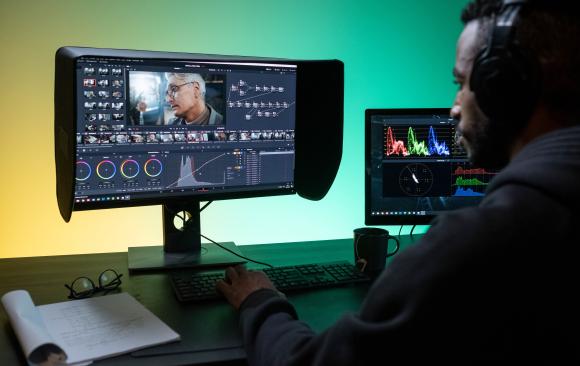


If you're a content creator, you know that color grading is essential to achieving the look and feel of your final product. Adobe Premiere is a great tool for video editing, but if you're looking to take your project to the next level, you need to use DaVinci Resolve for color grading. In this blog post, we'll show you how to transfer your Premiere project to DaVinci Resolve for color grading. Stay tuned!
Premiere has been the video editing platform of choice for content creators for years. It's a versatile application that offers a core set of essential tools for editing, basic sound mixing, basic effects, and basic color grading. Premiere's Lumetri Color panel offers some great options and works well for smaller projects, but it's not quite up there with the professional tools and workflow available in DaVinci Resolve, the industry standard for color grading. Adding Resolve into your post-production workflow won't cost you another monthly subscription fee; Resolve is free and has all the features you need to create a stunning look for your project.
(Don't know how to color correct in Resolve? Take a look at our Quick Guide to Color Correction in DaVinici Resolve blog post to learn how to get started.)
Where we are: you've finished your edit in Premiere and you want to move your project to DaVinci for Color Grading and then bring it back into Premiere to combine it with your sound mix and do your final export.
Here are two workflow options to make that process pretty painless.
The first step for either of the options below is cleaning up your timeline. Lots of tracks, titles, and effects can cause issues for the rest of this workflow, and in general, you don't need them for color grading. So, duplicate your final cut in your Premiere sequence and in the new duplicated sequence, which we'll call our "Color Export Sequence," then:
You might also want to remove transitions from your clips, but that depends on which of the next two processes you choose for moving your project to Resolve. If you choose the ProRes Workflow you'll probably want to leave them, if you choose the XML Workflow, you should remove them as it's possible they won't transfer back.
The ProRes Workflow involves exporting a single file from your "Color Export Sequence" and bringing that file into DaVinci to color grade it. You'll then export the sequence from DaVinci as a single file and import it into your Premiere project to finish.
If you're wondering why we're using ProRes 4444 instead of ProRes 422, it's because ProRes 4444 has more precise color sampling than 422. Since we're exporting for color grading, more precise color will be helpful.
The XML Workflow involves exporting an XML of your sequence which DaVinci can read so you can easily re-create it as a timeline and work with the original files in the Color Page.
You can find a similar workflow to this XML Workflow on the Frame.io blog. As with many things in content creation, there is not just one way to get from point A to point B. Always use the method that works best for you and the project you're working on rather than trying to force your project into a workflow that doesn't make sense for you.
Why choose one of our options over another? Like many situations in post production the answer of which workflow to use often comes down to personal preference, but there can be other reasons as well. If you are doing your color grading on a separate computer from where you did your edit, the ProRes Workflow is a little bit easier, as you're just dealing with a single file you need to move instead of all of your project files, which would be the case with the XML Workflow. The XML Workflow will likely be a bit faster and more accurate otherwise, since you won't have to identify where your cuts are as with the ProRes Workflow and you'll also be working off of your original files instead of an export from Premiere.
These workflows also assume you're planning to do your own color grading in DaVinci Resolve. If you're working with a colorist who will be doing this finishing for you, talk to them about what works best for them. They may prefer DNxHD to ProRes or want you to prep your timeline a little differently. You will likely also want to export a version of your edit with burned-in timecode as a reference. What's important if you're working with a colorist, though is communication. Talk to them about what they need and discuss with them in detail what look you want for the final color grade.
For more information, tips and tricks visit www.mnn.org/learn for free workshops, professional courses, filmmaking intensives, and more resources to make your productions successful.